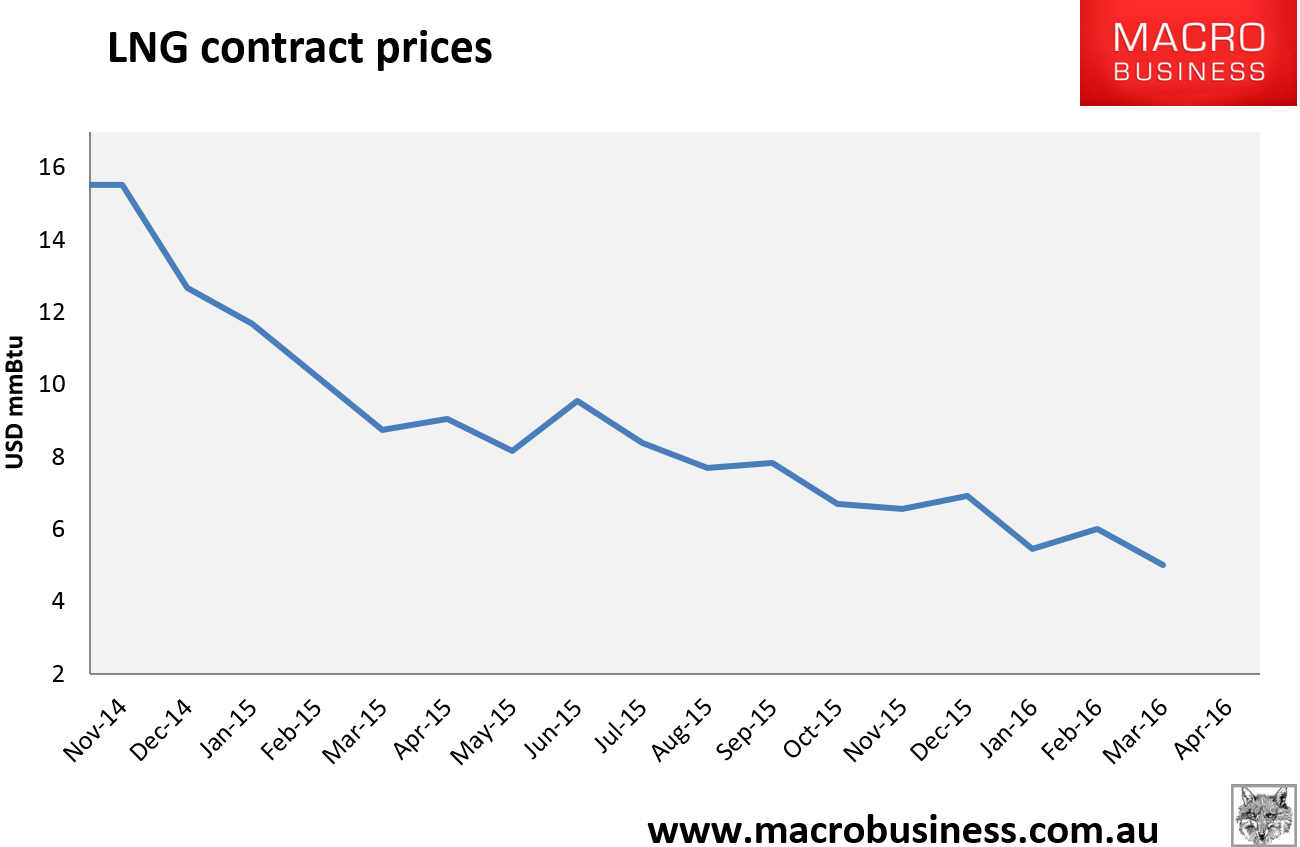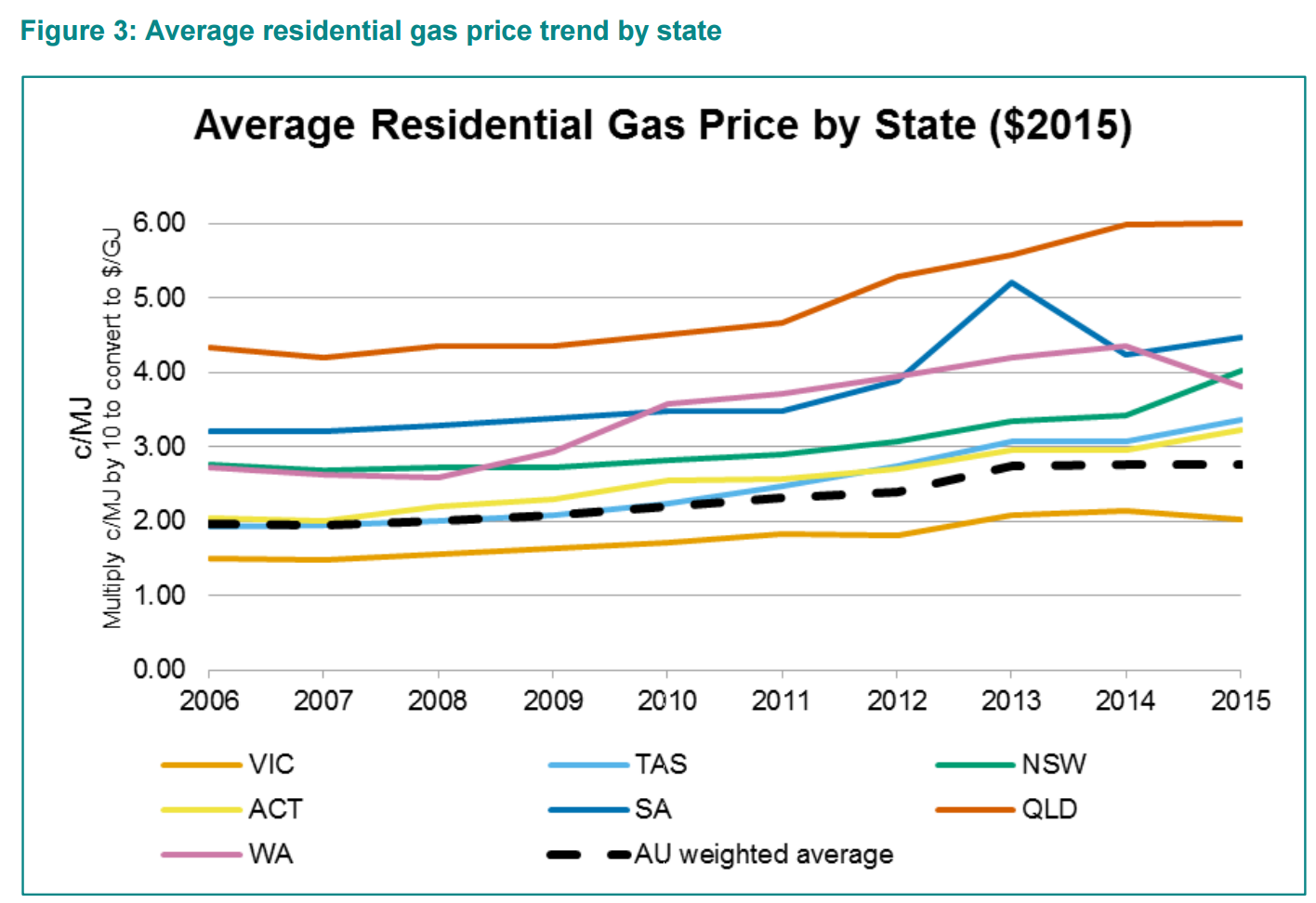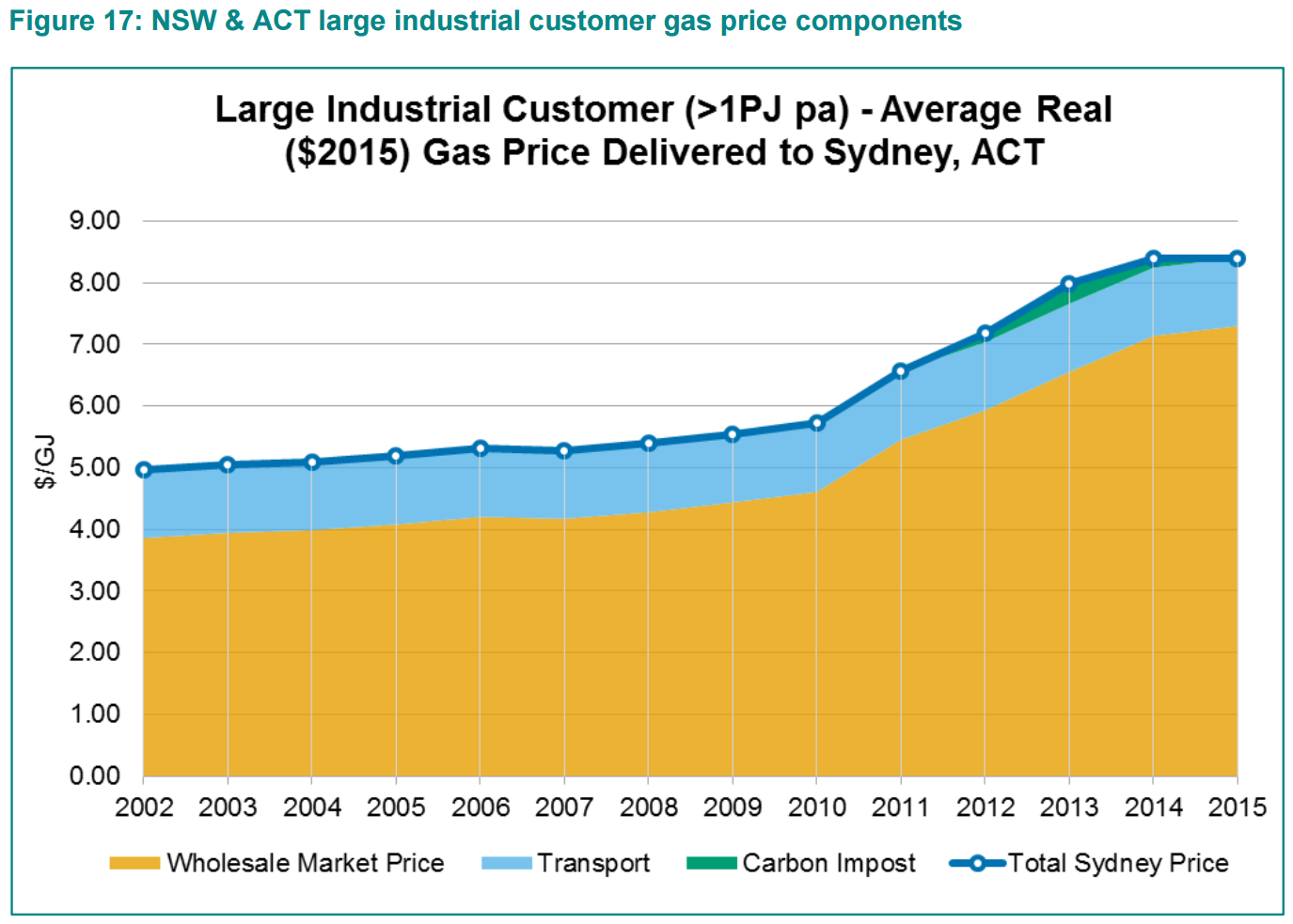From Domainfax comes a new chapter in the history economic stupidity:
Large industrial customers in north-west Queensland paid on average $11.97 a gigajoule for gas in 2015, compared to $5.68 in Victoria, a new report for the Department of Industry, Innovation and Science has found.
Industrial gas prices have been steadily rising in all states in recent years, except in Western Australia where prices peaked in 2009 and are softening. But buyers in Victoria benefit from their proximity to conventional gas fields in the Bass Strait and their distance from the three Gladstone LNG projects, which all started production within the last 14 months.
As a result, the biggest price increases over the past two years have been in Queensland, which has displaced WA as the most expensive state for gas for the first time since 2006.
“The further away you are from Gladstone the better off you were,” said Jim Snow, at Oakey Greenwood, the consultancy that wrote the report for the government.
“As you go down the coast the impact gets less and less.”
Truly you could not get more backwards than this. Over 2015 this is what happened to the international LNG price:
 And Here’s what happened to QLD’s big industrial users in the lead up (GJ and mmBtu are roughly similar):
And Here’s what happened to QLD’s big industrial users in the lead up (GJ and mmBtu are roughly similar): 
NSW:
VIC:

So, we opened some shiny new LNG plants that cost $80 billion (or at least half of them are open so far) all of them are losing money hand-over-fist and confronting near existential glut conditions in Asia markets where prices are going to sink to $2.50mmBtu over the next few years. None has any hope of recouping its capital cost and it’s a good chance that they’ll be unable to run at full capacity either before long. Meanwhile, at home, industry is paying near double the price for gas to compete with the same Asian industrial gas consumers on the receiving end of our cheap LNG. So we get hollowed out.
By way of comparison consider that over the same period the US unconventional gas revolution cratered its local gas price to $2mmBtu enabling its industry to take full advantage in the Pacific basin export market. It did this by a good old fashioned policy of domestic reservation.
And before you drift off into slumber remember that you are also paying for this unimaginable business and policy failure:

It would be cheaper for the economy if the government launched an on-market purchase of STO, shut GLNG down, and sold the steel for scrap.
Full report if you can stomach it!



